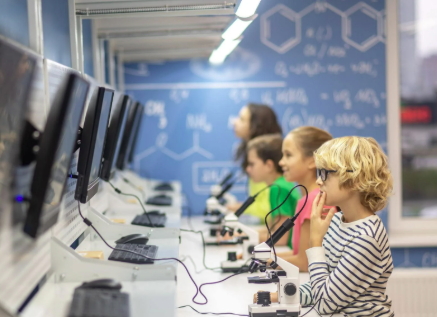The Internet of Things (IoT) is transforming education by connecting everyday objects to the internet, allowing for real-time data collection, smarter classroom management, and more personalized learning experiences. As IoT continues to grow, it’s changing how educators teach and how students interact with their learning environments.
What Is IoT in Education?
IoT refers to a network of physical devices—such as sensors, tablets, wearables, and smartboards—connected through the internet. These devices collect and share data that can help improve educational outcomes, classroom safety, and resource efficiency.
Key Benefits of IoT in Education:
- Enhanced Classroom Management
Smart lighting, temperature control, and occupancy sensors can create a comfortable, energy-efficient environment that supports concentration and well-being. - Real-Time Attendance and Tracking
Wearable devices or RFID badges can track attendance automatically and monitor student location within school premises for safety. - Personalized Learning Paths
Connected devices can track student engagement and progress. Platforms can then adapt lesson plans to suit individual learning speeds and styles. - Interactive Learning Experiences
Smartboards, IoT-enabled science equipment, and connected tablets offer interactive lessons, virtual labs, and immediate feedback. - Data-Driven Insights for Educators
IoT devices collect learning analytics that help teachers identify which students need additional support or which topics require reteaching. - Remote Learning Support
Smart cameras, microphones, and connected tablets enable seamless hybrid or distance learning. IoT ensures real-time collaboration and monitoring even outside the classroom. - Resource Optimization
Schools can monitor usage of supplies, books, and lab equipment to reduce waste and streamline inventory management. - Improved Safety and Security
IoT sensors can detect unauthorized access, monitor emergency exits, and help automate lockdown procedures in critical situations.
Challenges to Consider:
- Data Privacy: Collecting student data raises concerns about privacy and requires robust security measures.
- Infrastructure Costs: Installing and maintaining IoT systems can be expensive for some schools.
- Training and Support: Educators need guidance to effectively use IoT tools in meaningful ways.
Conclusion
The Internet of Things is reshaping education by making classrooms smarter, learning more personalized, and school operations more efficient. While implementation requires thoughtful planning and safeguards, the potential of IoT to enhance education is immense. As connectivity becomes more widespread, IoT will continue to empower educators and enrich the learning experience for students worldwide.













